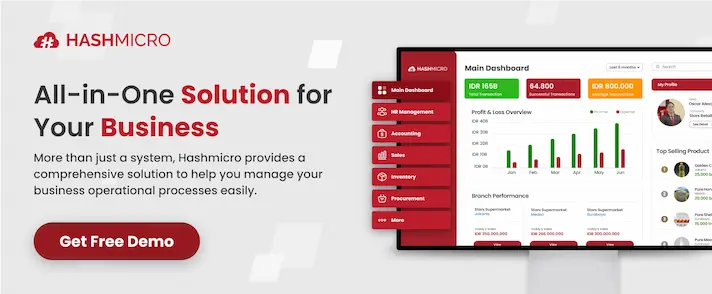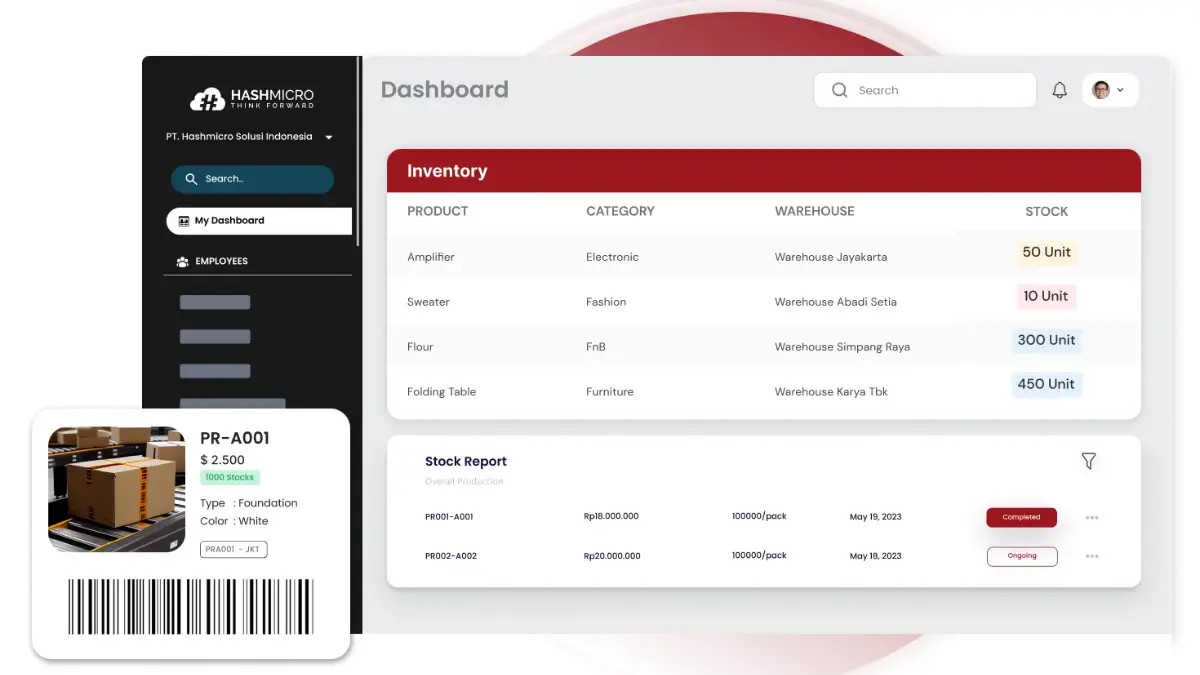Managing accurate product information across your organization can be a real challenge. For many businesses, item master data becomes a source of inefficiency, leading to mistakes in inventory management, procurement, and sales processes.
In fact, a survey by Softserve found that 65% of business leaders in the Asia-Pacific region admit to making key decisions based on inaccurate or inconsistent data. This data mismanagement can result in problems like overstocking or understocking and wasted time correcting errors that could have been avoided.
Fortunately, there’s a way to tackle this issue. By centralizing and standardizing your item master data, you can ensure accuracy and consistency across all departments. This approach not only saves time but also helps businesses make better, more informed decisions.
Many organizations have already benefited from effective item master data management. So, how can you optimize your business with the same solutions?
Key Takeaways
|

What Is an Item Master?
Before we dive into item master data, it’s important to first understand the concept of an item master. An item master serves as a comprehensive record for each product in an organization. It acts as a central repository containing all the critical information necessary for managing and tracking a product throughout its lifecycle within the business.
In large organizations selling physical goods, the item master holds vital info like product descriptions, pricing, inventory, supplier details, and lead times. It provides accurate, current data crucial for purchasing, production, and strategy.
The item master, stored in a company’s ERP system, is crucial for inventory, procurement, and sales teams. Managed by responsible individuals, it ensures data accuracy. With an organized item master, businesses can streamline operations and improve efficiency and profitability.
What Is Item Master Data?
Item master data is the backbone of any company’s inventory management system. It includes all the essential details about a product stored within the company’s ERP system, which helps teams across departments make informed decisions.
To make it even more useful, businesses often add custom fields based on specific needs. This might include physical parameters, such as size and weight, or other details determined by leadership. The more granular the data, the more actionable insights can be gathered, improving both inventory management and supply chain operations.
With accurate and well-maintained item master data, companies can make data-driven decisions. For example, understanding which product variations are most in demand allows businesses to adjust procurement and production plans accordingly. This ensures high-demand items are always stocked, boosting sales and reducing stockouts.
Why Is Item Master Data Important?

Having established the role of item master data in streamlining business processes, it’s essential to understand why accurate and well-maintained data is crucial for seamless operations across departments.
An accurate item master record ensures that productivity and workflows continue without unnecessary delays or additional costs. By keeping the data centralized, updated, and easily accessible, companies can reduce errors and misunderstandings that might otherwise arise.
Moreover, when maintained properly, item master data acts as the central hub for crucial information that supports supply chain management and enables businesses to adapt quickly to changes. This centralized data helps streamline decision-making and ensures consistent operations across various departments.
Consequences of inaccurate Item Master Data
On the other hand, if the item master data is inaccurate, it can lead to several operational challenges. Companies might end up ordering supplies too late or in incorrect quantities, which disrupts production schedules. Poor or misaligned item master data can cause significant financial losses and operational disruptions.
According to Gartner, poor data quality costs organizations an average of $12.9 million annually due to inefficiencies, errors, and process delays. This includes issues such as ordering mistakes, supply chain disruptions, and delayed deliveries all of which directly result from misaligned item master data.
What Does Item Master Data Include?
While businesses may vary in what they track, item master data generally includes:
| Key Information | Description |
| Product details | Basic product information, including name and description. |
| BOM (Bill of Materials) and material sources | List of materials needed to produce the product, along with their sources. |
| Cost of inputs | Cost associated with the materials and production processes. |
| Lead times for production and manufacturing | Time required to manufacture or assemble the product. |
| Suppliers and order quantities | Information about the suppliers and the quantities of materials ordered. |
| Inventory levels | Current stock levels of each product in inventory. |
Item master data must evolve with business needs to ensure accurate insights for purchasing, stock, and supplier coordination. Complex operations, like those with multiple warehouses, require more detailed inventory tracking than simpler ones. Tailoring data to operational needs optimizes system effectiveness.
How Is Item Master Data Used?

Item master data is primarily used for daily operational decisions. It helps manage inventory levels, ensures timely reordering from suppliers, and guarantees products are stocked where and when needed. Moreover, it supports inventory valuation, staffing decisions, and identifying unexpected trends in manufacturing and sales.
Supporting product life cycle analysis
Beyond daily operations, item master data becomes even more valuable during product life cycle analysis. This analysis helps track changes in purchase costs, inventory value, and profit margins. The insights gained directly inform decisions regarding the product’s overall health and profitability, guiding future strategy.
Strategic decision-making
While less frequently used, item master data also supports high-level strategic decisions about individual products, product categories, or even the company as a whole. It provides an essential snapshot of where the company currently stands, acting as a metaphorical “you are here” marker on the path to future success.
To improve efficiency, managing item master data is crucial. HashMicro’s Inventory Management Software streamlines this with accurate, real-time updates. Click the banner below to see the cost and learn how the CTC Grant can cover up to 70% for your solution procurement.
Manage Item Master Data With HashMicro Inventory Management Software

Managing item master data effectively is crucial for smooth business operations. By maintaining a centralized and accurate system, businesses can ensure that product information remains consistent across departments. This streamlined approach minimizes errors and improves decision-making.
HashMicro’s Inventory Management Software helps businesses optimize inventory accuracy and operational efficiency. With advanced item master data reporting features, it enables companies to manage stock levels, track trends, and avoid costly mistakes.
For those looking to improve inventory management, HashMicro offers a free demo to experience how its item master data software can enhance your operations. See firsthand how it can streamline processes and boost overall efficiency.
HashMicro also provides a comprehensive range of features such as:
RFID warehouse rack stock in-out automation:
Automate tracking of stock movement in and out of warehouse racks, improving inventory accuracy and efficiency. This reduces manual errors and speeds up stock handling processes, contributing to overall productivity.
OCR for receiving:
Accelerate the receiving process by capturing and processing data from incoming goods. This ensures item master data is accurate and up-to-date, reducing manual entry and enhancing operational speed.
Stock forecasting:
Proactively manage stock levels by forecasting future inventory needs. This data-driven approach ensures optimal stock availability, preventing stockouts or overstocking and improving customer satisfaction.
Run rate reordering rules:
Generate precise reordering predictions based on current item master data and market trends. This ensures balanced stock levels, meeting demand without overstocking or running into shortages.
Fast-moving, slow-moving, and non-moving stocks analysis:
Identify and categorize fast, slow, and non-moving stock. This analysis helps businesses optimize inventory, prioritize procurement, and improve sales strategies for better resource allocation.
Racking capacity with putaway strategy:
Improve warehouse efficiency by determining the optimal storage locations for products. This strategy reduces placement errors and maximizes space usage, helping warehouse teams find items quickly.
Stock reservations & reporting:
Manage stock reservations and provide detailed reports. This ensures desired items are available and boosts customer satisfaction by keeping inventory accurate.
Quality control management:
Ensure all items stored and shipped meet quality standards. Regular quality checks allow businesses to identify defective or non-compliant products, maintaining high inventory standards.
HashMicro’s system integration with third-party platforms and customization options further enhances its effectiveness. Businesses in Singapore can rely on HashMicro for seamless operations, offering a comprehensive solution for item master data management.
By implementing HashMicro, you’re choosing the best partner for long-term operational success.
Conclusion
Accurate item master data optimizes inventory, improves supply chain management, and supports decision-making by centralizing product information like stock levels, costs, and suppliers, preventing errors, ensuring timely reordering, and boosting efficiency from procurement to sales.
HashMicro’s Inventory Management Software delivers a comprehensive solution for item master data management. Features like RFID automation, stock forecasting, and stock reservations improve inventory accuracy and boost operational efficiency. It also offers seamless integration and customization to fit specific business needs.
Ready to take your inventory management to the next level? Sign up for a free demo today and see how HashMicro can streamline your operations and boost long-term business success.
Warning: Undefined array key "med" in /home/hashmicr/public_html/blog/wp-content/plugins/insert-headers-and-footers/includes/class-wpcode-snippet-execute.php(419) : eval()'d code on line 281

FAQ about Item Master Data
-
What is the difference between item master data and product master data?
It refers to specific details about a product’s inventory, suppliers, and costs, while product master data includes broader information like marketing and technical specifications.
-
Why is accurate item master data critical for business growth?
Accurate item master data helps businesses make informed decisions, avoid stock issues, and streamline operations, all of which support sustainable growth and customer satisfaction.
-
How does item master data impact customer experience?
By ensuring product availability and accurate order fulfillment, item master data reduces errors and delays, improving the overall customer experience.
-
Can item master data be shared across different business systems?
Yes, item master data can be integrated with systems like ERP and CRM to ensure consistency and accuracy across departments, improving overall workflow efficiency.













